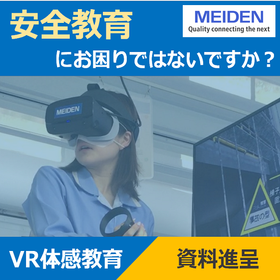Key Points of Particle Size Evaluation and Classification Techniques in Powder Manufacturing Processes
S11236
★ You can hear about dry and wet classification devices, as well as recent topics in classification technology! ★ A leading expert will explain evaluation methods and points to consider for practical classification operations!
Lecturer Professor Hidetoshi Yoshida Department of Particle Engineering, Graduate School of Engineering, Hiroshima University Target Audience: Engineers, researchers, and beginners interested in particle and classification technology Venue: Tekuno Kawasaki, 4th Floor Conference Room [Kanagawa, Kawasaki City] 5-minute walk from Tokyu Mizonokuchi Station East Exit, JR Musashi-Mizonokuchi Station Date and Time: December 21, 2011 (Wednesday) 13:30-16:30 Capacity: 20 people *Registration will close once full. Please apply early. Participation Fee: [Early Bird Discount Price] 46,200 yen (tax included, including text costs) for up to 2 people per company *Limited to Tech-Zone members who apply by December 7. Membership registration is free. *After December 7, the [Regular Price] will be 49,350 yen (tax included, including text costs) for up to 2 people per company.
Inquire About This Product
basic information
【Lecture Summary】 To create materials with desired functions or to process powders as needed, it is important to select the appropriate powder. This presentation will explain why classification operations are necessary, the principles of methods for selecting fine powders (classification), dry and wet classification equipment, recent topics related to classification, evaluation methods for practical operations, and points to consider. In particular, it will discuss high-performance technology for cyclones utilizing rotational flow, including experiments, simulations, and videos of visualization experiments. Additionally, it will provide an overview of recent trends in standard particles both domestically and internationally.
Price range
P2
Delivery Time
P2
Applications/Examples of results
**Program** 1. Basics of Particle Classification Operations 1-1 Basic Principles of Classification 1-2 Evaluation Methods for Classification Performance: Separation Diameter, Collection Efficiency of Powders, and Classification Accuracy 2. Fundamental Theories of Classification Operations 2-1 Upward Flow Separation Theory 2-2 Horizontal Flow Separation Theory 3. Characteristics of Dry Classification Equipment and Explanation of CFD Calculation Results 3-1 Centrifugal Separation (Dry Cyclone) 3-2 Inertial Force Separation (Louvre Blade Method) 3-3 Screening Classification 4. Operational Considerations for Separation Diameter Movement and Classification Operations in Dry Cyclones 4-1 Blow-Up Operations and the Effect of Inverted Cones Installed in Collection Boxes 4-2 Performance Improvement through Blow-Down Operations 4-3 Sub-Micron Classification through Local Fluid Control Operations 4-4 Utilization of Guide Plates 5. Wet Classification Equipment 5-1 Characteristics of Liquid Cyclones and the Impact of Raw Material Slurry Temperature on Separation Performance 5-2 Characteristics of Top-Plate Rotating Liquid Cyclones 5-3 Electric Field Applied Wet Classification 5-4 Classification Operations Using Forced Rotation **[Q&A and Business Card Exchange]**
Company information
Our company has developed its business from "seminar planning" to various forms such as "lecturer dispatch," "publishing planning," "technical consultant dispatch," "trend research," "business matching," and "business development consulting," in order to support clients in a wide range of fields including chemistry, electronics, automotive, energy, medical devices, food, and building materials. By doing so, we have advanced our company and opened up new markets. AndTech promises to continue listening to our clients' voices, entering the business areas and markets they desire, and to remain a company that is loved by our clients, as we share their challenges, think together, and forge new paths.











